Hot Topics
 by Maggie Mueller
Updated On Aug 13, 2024
Published On Aug 13, 2024
Basic iPhone Tips Ideal for Newbies
by Maggie Mueller
Updated On Aug 13, 2024
Published On Aug 13, 2024
Basic iPhone Tips Ideal for Newbies
The release of a new version of iOS is often a highly anticipated event for most iPhone users, as it brings new features and improved device performance. It's understandable that you'd want to update your device as quickly as possible. However, some users have reported issues with their iPhones not updating to the latest iOS. If this issue is preventing you from accessing the features the new iOS promises, this article will show you how to fix it.
There are several reasons why your iPhone might not update. The most common include:
First, try to force restart your iPhone, if system bugs are causing the problem. Here's how to force restart your iPhone:
iPhone 8 or Later: Press and quickly release the Volume Up button, press and quickly release the Volume Down button, and then press and hold the Side Button until the Apple Logo appears.

iPhone 7 and 7 Plus: Press and hold down the Volume Down and Power buttons simultaneously. Release the buttons when you see the Apple Logo.

iPhone 6s and 6s Plus: Press and hold down the Power and Home buttons at the same time until the Apple Logo appears.

If your device is enrolled in the Apple Beta Software Program, you will not be able to install the public version until you turn off beta updates. So, to avoid the update notification not showing up, try to turn off the iOS beta update:
Go to Settings > General > Software Update > Beta Updates and tap on the toggle to turn it off.
If your device is running iOS 16.3 or earlier, go to Settings > General > VPN & Device Management and tap on the iOS Beta Software Profile that appears. Tap "Remove Profile" and enter your passcode when prompted.
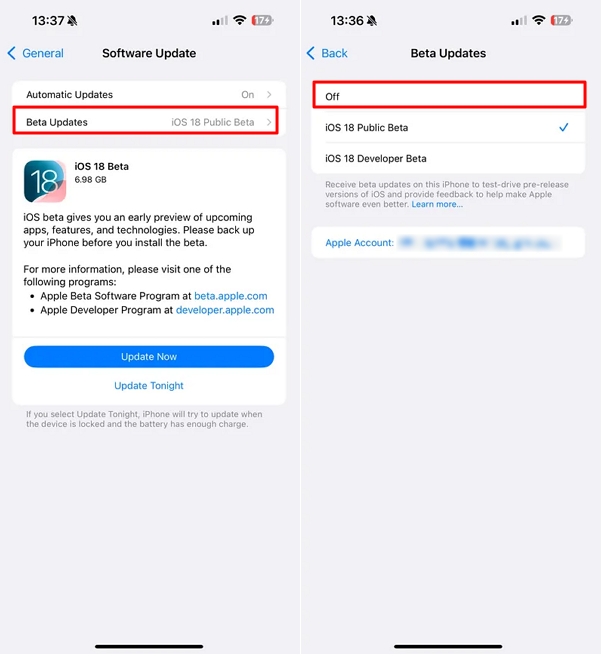
It's also possible that your device is not compatible with the latest iOS such as iOS 17 or iOS 18 beta. Before proceeding, make sure that your device is supported by iOS 17 or iOS 18. The following is a list of the devices that support iOS and iPadOS 18:
If your device is compatible with iOS 18 and you are still unable to update it, ensure that the device can access Apple servers. You can check the status of Apple Servers at Apple's System Status page. If you are seeing red dot next to "Sign in with Apple", "Apple ID", or "iCloud Account & Sign In," you'll need to wait until Apple fixes the issue.

Moreover, your device needs to be charged to at least 50% battery capacity for an iOS update to be successful. Ensure that your device is charged before trying to install the update. If you have set up automatic updates, the device will update during the night if it is plugged in and connected to a Wi-Fi network.
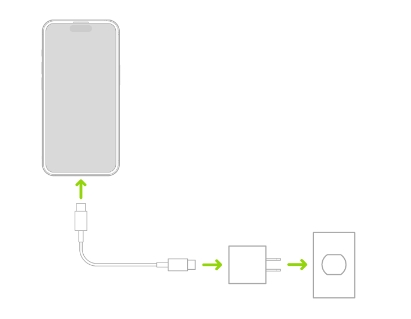
A major iOS update typically requires around 10 GB of storage to complete the installation. Check your storage capacity in the device's settings to ensure your device can handle the update. If you don't have adequate storage, delete some unimportant data such as photos, videos, apps, messages, etc, to free up space for the update.
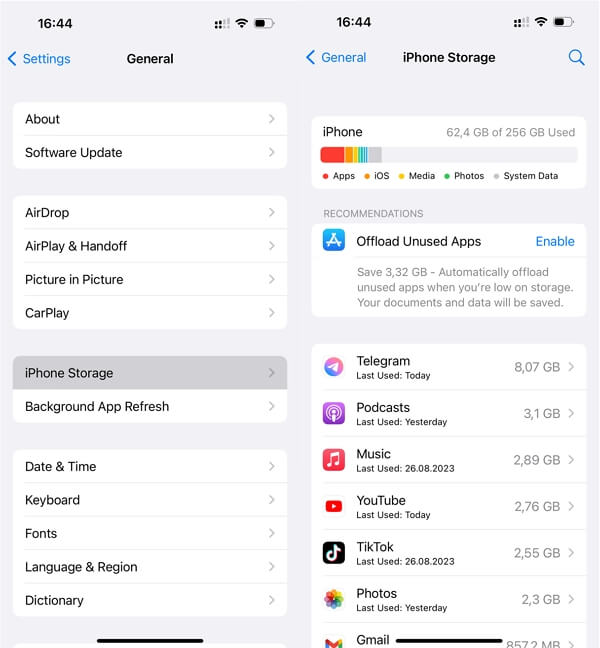
Your device needs to be connected to the internet to download and install iOS updates. The update files can be large, so it's best to check your network condition and make sure your device is connected to a stable and reliable Wi-Fi network to avoid interruptions.
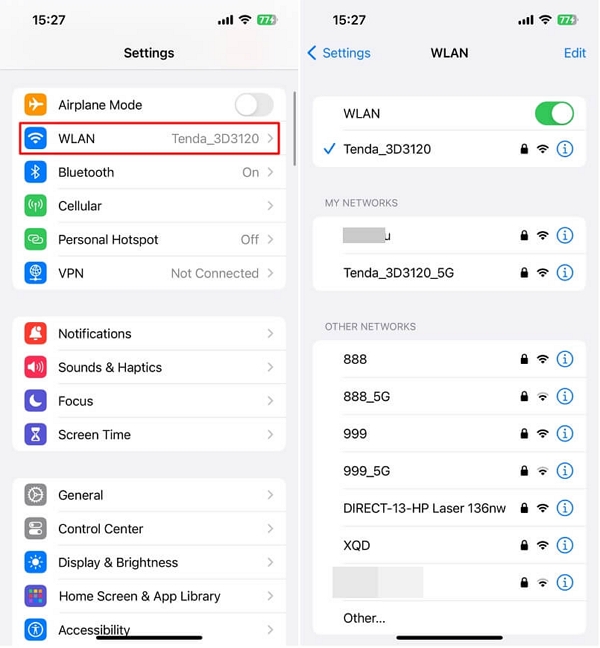
If you have completed the above checks, try deleting the iOS update and starting the download process again. Use these steps:
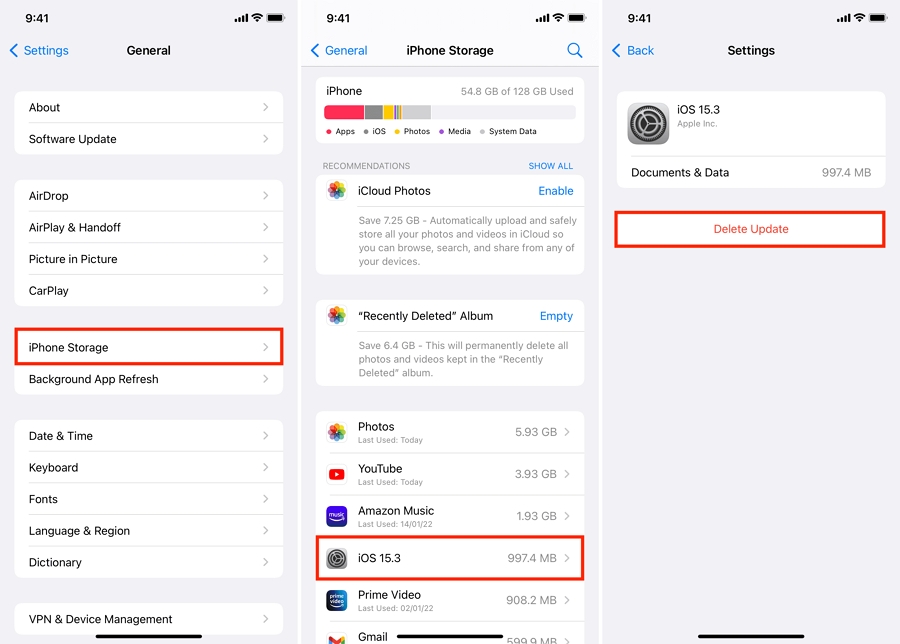
Now try updating the device manually with these steps:
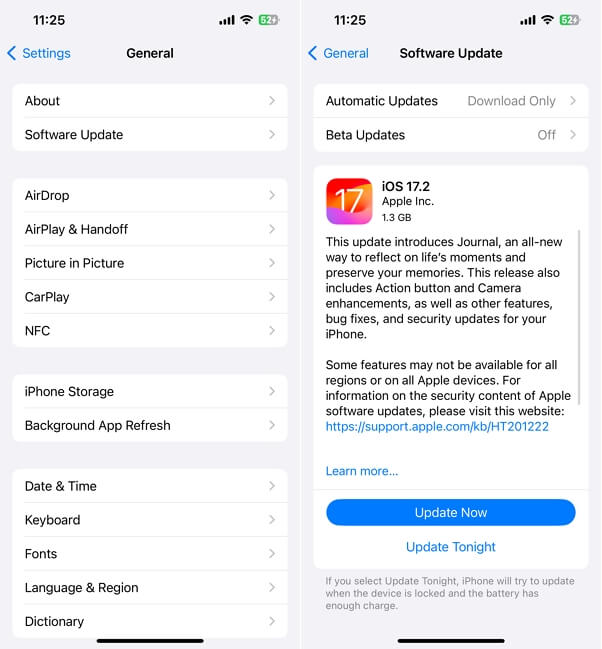
If it still fails to update your device over the air, try to update your iPhone or iPad by connecting it to your computer. Before using the steps below, it's recommended to create a full backup of all your data to avoid data loss.
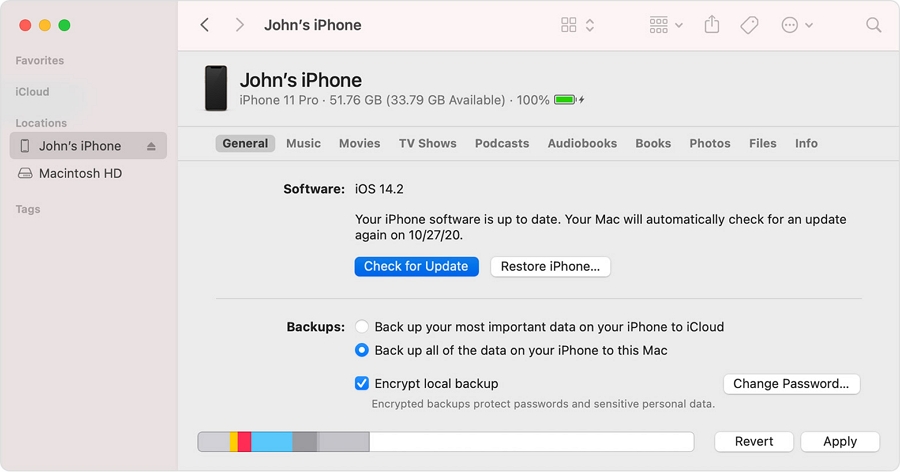
If all the solutions above don't resolve the problem, there may be certain system bugs causing the issue. One way to eliminate these bugs is to use TinyFix iOS System Recovery program designed for this purpose. This tool can update your device to the latest version, and remove any system glitches without causing data loss. To use it:

If you are still unable to update your device even after trying all the solutions above, contact Apple Support for additional help. It's possible that an unforeseen hardware issue is causing the problem, and Apple technicians may be able to diagnose and fix it.
Updating the iOS on your device is usually a straightforward process, especially if you have enabled automatic updates. However, like everything iOS-related, sometimes things don't go according to plan. We hope the solutions outlined above have been helpful, and that you can now easily update your device to the latest version of iOS 18.
